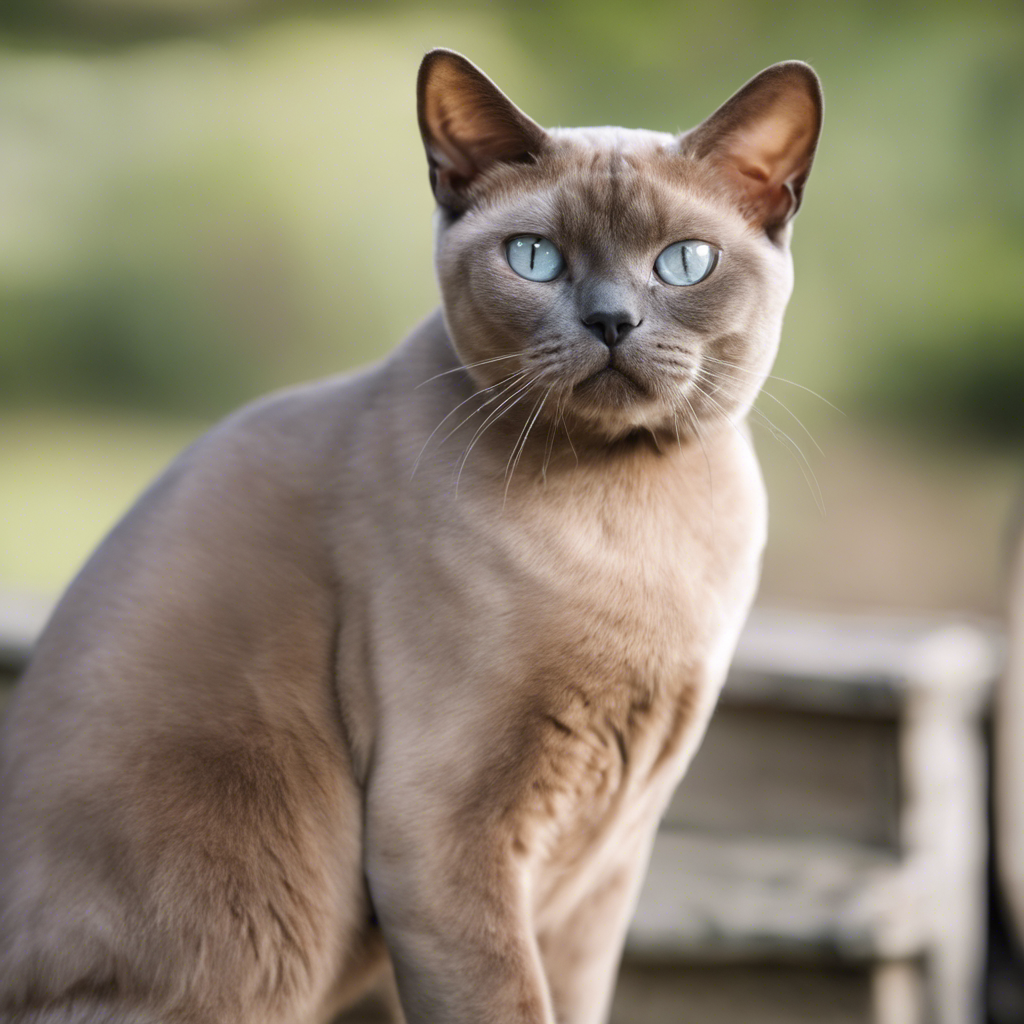Revealing the secrets: Health problems and genetics of the Burmese cat
The Burmese cat, with its satin-coloured coat and bright eyes, enchants not only with its appearance, but also with its friendly and people-oriented nature. However, the radiant aesthetics of this breed conceal aspects that are equally important for future and current owners, namely the health problems and genetics of the Burmese cat.
A brief historical digression
Before we delve deeper into the subject, let's take a brief look at the history of this fascinating cat breed. Originally, the Burmese catas the name suggests, originated in Myanmar (formerly Burma). However, it found its way to the western world mainly through ship travellers and adventurers in the early 20th century. Since then, its popularity has grown steadily, not least because of its enchanting character and appealing appearance.

The mysteries of genetics
Genetics plays an important role in the breeding and health of the Burmese cat. Scientists and breeders are working hand in hand to unravel the genetic secrets of this breed. The aim is not only to understand and maintain certain physical characteristics, but also to identify and minimise genetic health problems. The Burmese cat has some genetic characteristics that can make it both unique and susceptible to certain diseases.
Health problems and genetics of the Burmese cat
The health of our velvet-pawed friends is close to all our hearts. Although the Burmese cat is generally considered a robust breed, there are some health problems that can be specific to them:
- Hypokalaemia**: This condition, which is associated with low blood potassium levels, can lead to weakness, particularly of the hind legs.
- Burma head defect (BHD)**: A rare but serious genetic abnormality that results in a deformation of the facial skull.
- Heart disease**: As with many breeds, especially in advanced age, there is an increased tendency for Burmese to develop heart disease, especially hypertrophic cardiomyopathy (HCM).
Preventive care measures
The perception of these health challenges leads us to the question of how we can best promote and protect the quality of life and health of our Burmese cats. Here are some tips:
- Regular visits to the vet**: An important key to the prevention and early detection of diseases.
- Balanced diet**: A diet specifically tailored to your cat's needs can prevent many health problems.
- Genetic testing**: Especially if you are considering breeding, genetic testing can help minimise the risk of hereditary diseases.
To a long cat life: Nutrition and exercise
Another important aspect to support the health of the Burmese cat is a balanced diet and sufficient exercise. Burmese cats are known to be relatively active and maintain their playful behaviour even in old age.
- Nutrition**: Make sure you feed your cat high-quality food that contains all the necessary nutrients in the right quantities.
- Play and fun**: Make sure your cat has plenty of opportunities to exercise and play. Interactive toys can work wonders to prevent boredom and promote physical and mental health.
The key lies in responsibility
In conclusion, love and care are the foundations for a long and healthy cat life. Knowledge of the health problems and genetics of Burmese cats enables us to take preventative action and ensure the well-being of our beloved four-legged friends. Breeders and cat owners alike are required to take a responsible approach to the health and breeding of these wonderful creatures.
For those of us who have the privilege of having a Burmese cat as part of our family, it is an ongoing pleasure and obligation to look after their welfare. With the right knowledge and care, we can ensure that our furry friends live long, happy and above all healthy lives.
FAQs
Which pedigree cats are more susceptible to disease?
Are all cat breeds equally susceptible to Hereditary diseases? No, some breeds are more susceptible to certain hereditary diseases than others. For example, the Maine Coon breed is particularly prone to hypertrophic cardiomyopathy, while Persian cats often suffer from polycystic kidney disease.
How old does a Burmese cat get?
The Burmese is actually very robust, but problems such as immune deficiencies, diseases and shorter life expectancy often occur due to strong inbreeding. The Burmese can actually live up to 17 years, but on average has a life expectancy of up to 12 years.
Are Burmese cats suitable for allergy sufferers?
Cat despite allergy? Cats are generally less allergenic than males and neutered males are less allergenic than non-neutered males. Breeds that shed little fur and have no undercoat, such as Russian Blue, Siberian Longhair, Burmese, Balinese or Siamese cats, are considered allergy-friendly.
Can you keep a Burmese cat alone?
Burmese cats are very intelligent and can learn to open doors, for example, which often makes them successful escape artists! Burmese cats do not like to be alone, so if you are not at home often, you should definitely get a second cat!
Author
-

David is a passionate aquarist with more than 20 years of experience in setting up and maintaining freshwater and saltwater aquariums. He specialises in the biodiversity of aquatic ecosystems, aquascaping and the species-appropriate keeping of aquarium fish. His articles on haustierewissen.de are a treasure trove for aquarium enthusiasts looking for sound advice and creative ideas for their underwater worlds.
View all posts




